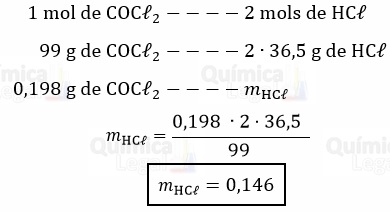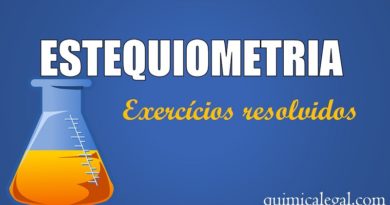Fosfogênio, COCℓ2, é um gás venenoso…
(PUC-MG) Fosfogênio, COCℓ2, é um gás venenoso. Quando inalado, reage com a água nos pulmões para produzir ácido clorídrico (HCℓ), que causa graves danos pulmonares, levando, finalmente, à morte: por causa disso, já foi até usado como gás de guerra. A equação química dessa reação é:
COCℓ2 + H2O → CO2 + 2 HCℓ
Se uma pessoa inalar 198 mg de fosfogênio, a massa de ácido clorídrico, em gramas, que se forma nos pulmões é igual a:
a) 1,09 × 10-1.
b) 1,46 × 10-1.
c) 2,92 × 10-1.
d) 3,65 × 10-2.
e) 7,30 × 10-2.
Resolução
De acordo com a equação química, já balanceada, são formados 2 mols de HCℓ para cada mol de COCℓ2 que reage. Assim, temos:

Lembre-se que: 1 g = 1.000 mg; 0,1 = 1,0 × 10-1
Gabarito: LETRA B
Confira mais EXERCÍCIOS RESOLVIDOS de ESTEQUIOMETRIA.
Tá afim de ver mais RESOLUÇÕES COMENTADAS da PUC?

